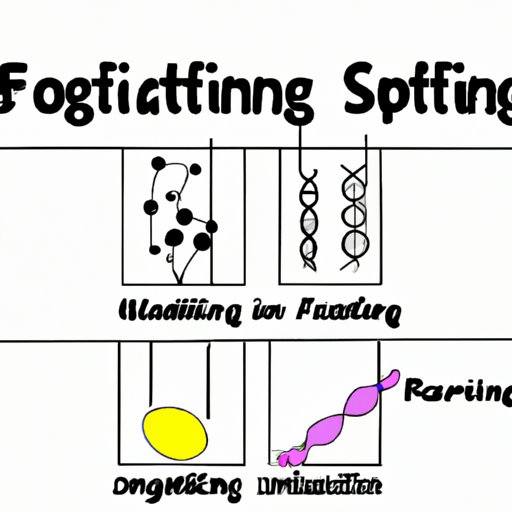Introduction
Offspring is the term used to describe a living organism that is born or produced from its parent or parents. In the scientific realm, offspring are studied to understand how species evolve over time through genetic changes. This article provides a comprehensive guide to exploring offspring in science, examining the relationship between genetics, heredity, and reproduction.

Exploring the Science of Offspring: What is Offspring and How it Develops
To understand the science of offspring, it’s important to first look at the role of genetics and heredity in development. Genetics is the study of how traits and characteristics are passed from one generation to the next. Heredity is the process by which these traits and characteristics are passed down. Both genetics and heredity play a major role in determining the physical characteristics and behaviors of offspring.
When it comes to understanding how offspring develop, there are two main aspects to consider: genotypes and phenotypes. Genotypes refer to the genetic makeup of an organism, while phenotypes refer to the physical characteristics and behaviors that result from the genotype. Each organism has a unique combination of genes, which can lead to variations in offspring.

A Comprehensive Guide to Offspring: The Basics of Genetics and Development
At the most basic level, offspring are determined by the chromosomes found in their parent’s cells. Chromosomes are structures made up of DNA that contain the genetic information that determines the characteristics of an organism. Humans have 23 pairs of chromosomes, with each pair containing one chromosome from each parent.
Inheritance patterns refer to the way in which traits and characteristics are passed down from generation to generation. These patterns are determined by the genes that are present in the chromosomes. Some traits and characteristics are dominant, while others are recessive. Dominant traits are more likely to be expressed in the offspring, while recessive traits are less likely to be expressed.
Phenotypes refer to the physical characteristics that are visible in an organism. These characteristics are determined by the combination of genes that are present in the organism’s chromosomes. For example, the color of an organism’s eyes is determined by the combination of genes in its chromosomes.
Investigating Offspring: Examining the Role of Heredity in Reproduction
Heredity plays an important role in reproduction. In the mid-1800s, Austrian monk Gregor Mendel conducted experiments with pea plants that helped to explain the basic principles of heredity. He observed that certain traits were inherited independently of other traits, and that the traits could be passed on from generation to generation. His work laid the foundation for the science of genetics.
Mendelian genetics refers to the study of how traits and characteristics are passed down through generations according to Mendel’s laws of inheritance. Non-Mendelian inheritance patterns refer to the ways in which traits and characteristics can be passed down that do not follow Mendel’s laws. Environmental factors, such as diet and lifestyle, can also influence the development of offspring.

Exploring the Relationship Between Parents and Offspring: How Genes are Passed On
Genes are passed on from parents to offspring through sexual reproduction. During sexual reproduction, the genetic material from two parents combines to form a new organism. This process is known as meiosis. The new organism contains a combination of genes from both parents, giving it a unique set of characteristics.
The transmission of genes from parent to offspring occurs during the process of mitosis. Mitosis is the process by which cells divide and replicate, allowing the genetic material to be passed on to the next generation. During this process, the genes that are present in the parent’s cells are transferred to the offspring’s cells.
Understanding Offspring Through Evolutionary Biology: Examining How Species Change Over Time
Evolutionary biology is the study of how species change over time. Natural selection is one of the key mechanisms of evolution. It is the process by which organisms with favorable traits are more likely to survive and reproduce, passing on their traits to their offspring. This leads to changes in the gene pool of a population over time.
Adaptive radiation is another mechanism of evolution. This is the process by which a species evolves into different forms in response to environmental pressures. Genetic drift is another evolutionary process, in which random changes in the gene pool of a population occur due to chance.
Conclusion
This article provided a comprehensive guide to exploring offspring in science. It examined the role of genetics and heredity in development, the basics of inheritance patterns, and how species change over time. Understanding offspring is essential to understanding how species evolve, and how traits and characteristics are passed down from one generation to the next.
For further reading, some great resources include “Understanding Genetics” by the National Human Genome Research Institute, “An Introduction to Evolutionary Biology” by John Maynard Smith, and “The Origin of Species” by Charles Darwin.
(Note: Is this article not meeting your expectations? Do you have knowledge or insights to share? Unlock new opportunities and expand your reach by joining our authors team. Click Registration to join us and share your expertise with our readers.)
